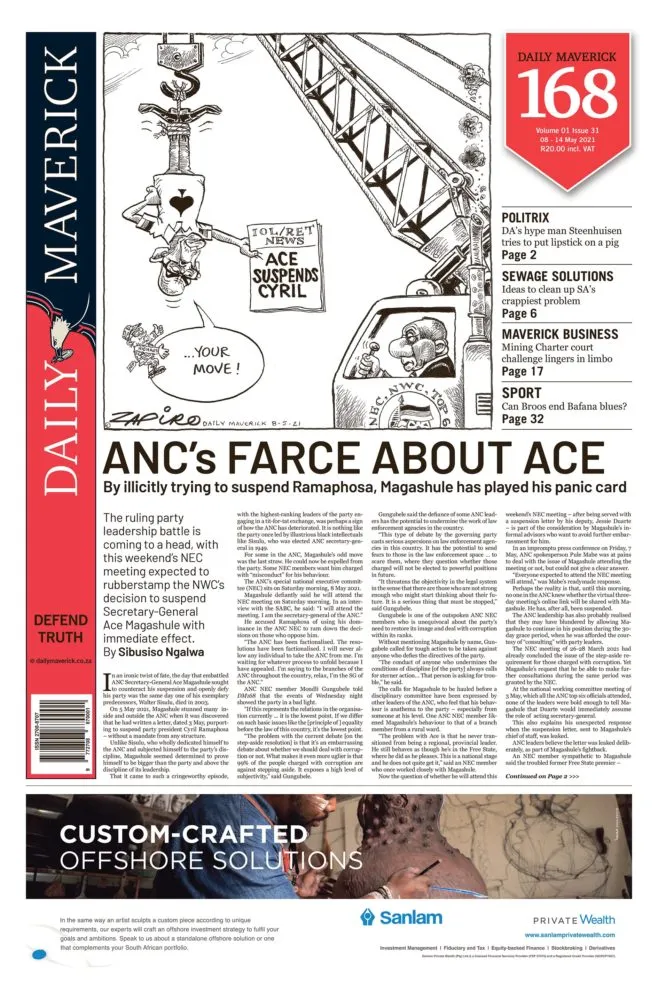First published in the Daily Maverick 168 weekly newspaper.
Applying financial metrics to bribery is usually impossible because one of the leading characteristics is, to put it mildly, a lack of transparency. Secrecy, for obvious reasons, is baked into the pie. But a recent news story allows a certain tongue-in-cheek financial analysis of bribery, and illustrates several things, including why bribery has taken off so powerfully in South Africa.
But first, a whole box full of caveats are in order. Most importantly, this is not a case of proven bribery. The story I refer to traces the history of donations by politically connected businessman Thulani Majola to political parties, both the ANC and the EFF, artfully playing both sides of the aisle. But the story itself does not claim to trace a direct relationship between the donations and the tenders his company LTE Consulting won. It’s possible he was just lucky. The point is that no court has declared a link, and therefore Majola can rightfully claim he is innocent until proven guilty.
The other problem is that although the story revealed an extraordinary amount of information about the tenders and the donations, what it does not reveal is the profitability of the projects that resulted from the tenders. That renders most financial calculations lacking. Once again, there is, shall we say, a certain lack of transparency.
Still, let’s forge ahead on the information we have got. The base claim of the story is that, over three years between 2016 and 2019, Majola doled out more than R3-million to a Malema-linked front company, and more than R14-million to various ANC structures. Donations were made in bursts, some modest, some substantial, their frequency peaking in the run-up to elections.
For that investment, if it was an “investment”, LTE Consulting won contracts that cost the fiscus about R4-billion. The biggest of these was a water project for drought-stricken communities around the town of Giyani, in the Mopani region of Limpopo. LTE was appointed in 2014 and the initial contract was worth around R100-million. But costs escalated and the project eventually cost taxpayers around R3-billion. The contract is now being investigated after the Auditor-General alerted the Hawks.
So, what level of profitability was the company achieving? This, of course, we don’t know entirely, but since the project delivered practically nothing, you might say the level of profitability was pretty close to 100%.
So, speculatively, we have costs to the company of all its political donations, and profit of, let’s call it R2.5-billion. Because LTE is not listed, getting at the value of shareholder equity is tricky. Much easier is to calculate return of capital employed. ROCE is a great number and tells you lots of things, but mainly it shows how effectively companies are using their money.
To calculate LTE’s ROCE, one just plugs in the EBIT (earnings before interest and tax) and divides by the capital employed, which is total assets minus current liabilities. In this case, the calculation is R2.5-billion divided by R17-million. That results in a metric of 147.00. Or, in other words, for every R1 invested, the company was earning R14,700.
How does that compare with the real world? The long-term average ROCE for the companies that make up the Dow Jones industrial average is 0.10. For every dollar or rand invested, the companies earn about 10c. Compare a ratio of 147.00 to a ratio of 0.10. Incredible, isn’t it?
In truth, these numbers are really fictional; LTE would have had expenditures that would have eaten into the ratio – one hopes. But the extreme variance does tell us one thing: bribery in South Africa is amazingly profitable. The tiny amount of money LTE had to expend to get such huge contracts is, frankly, embarrassing. Why are the contractors so bad at negotiating a fair payoff for such an enormous contract value?
What the disparity really shows us is how desperate political parties are for donations. And it also shows how little public servants value the money taxpayers give them. For them, the tax payments are little more than Monopoly money, dished out casually in huge quantities for a measly return.
If we, the hard-working taxpayers of SA, are going to be stolen from, is it too much to ask that we are stolen from for a respectable financial return? DM168
This story first appeared in our weekly Daily Maverick 168 newspaper which is available for free to Pick n Pay Smart Shoppers at these Pick n Pay stores.


















 Become an Insider
Become an Insider
Comments - Please login in order to comment.